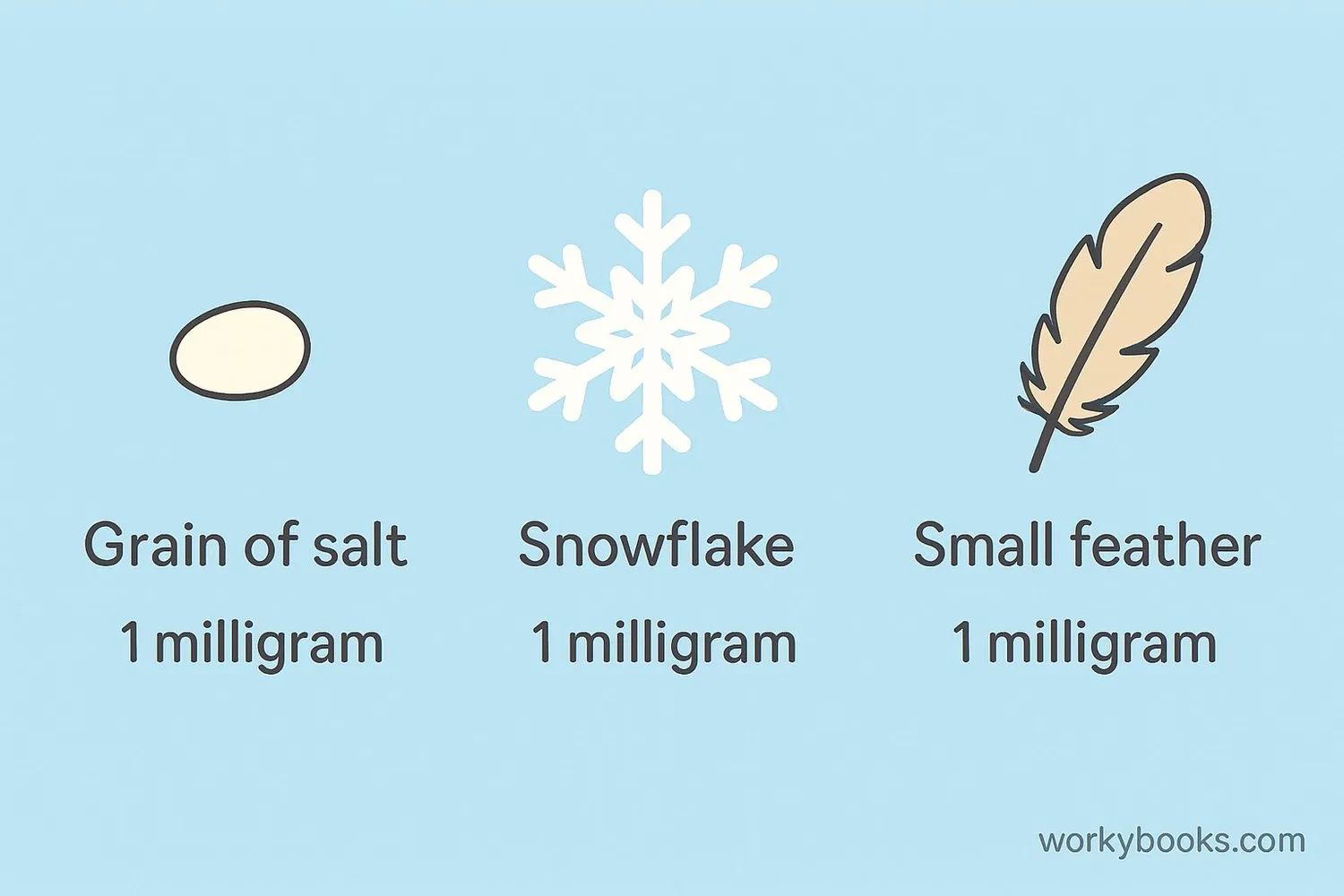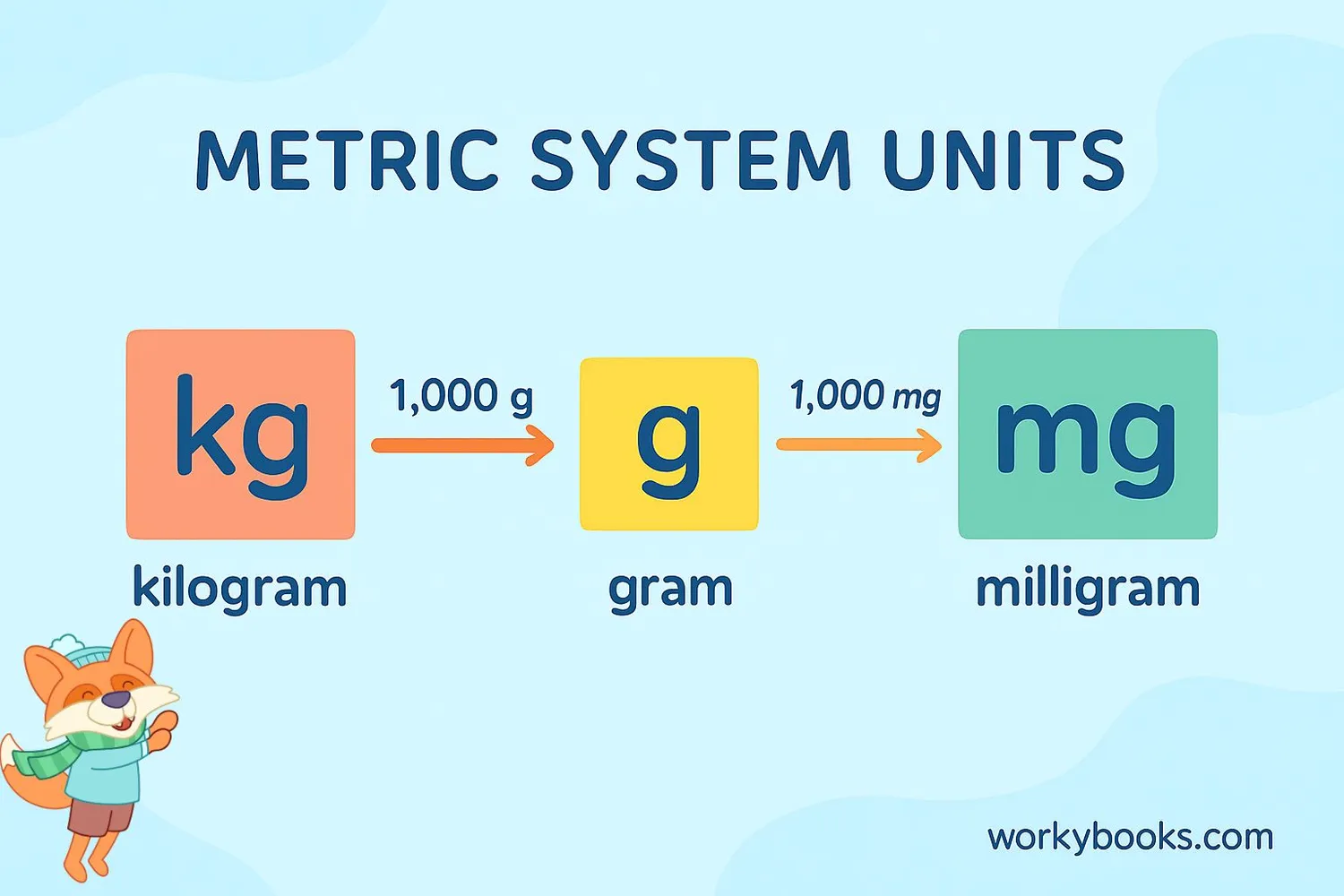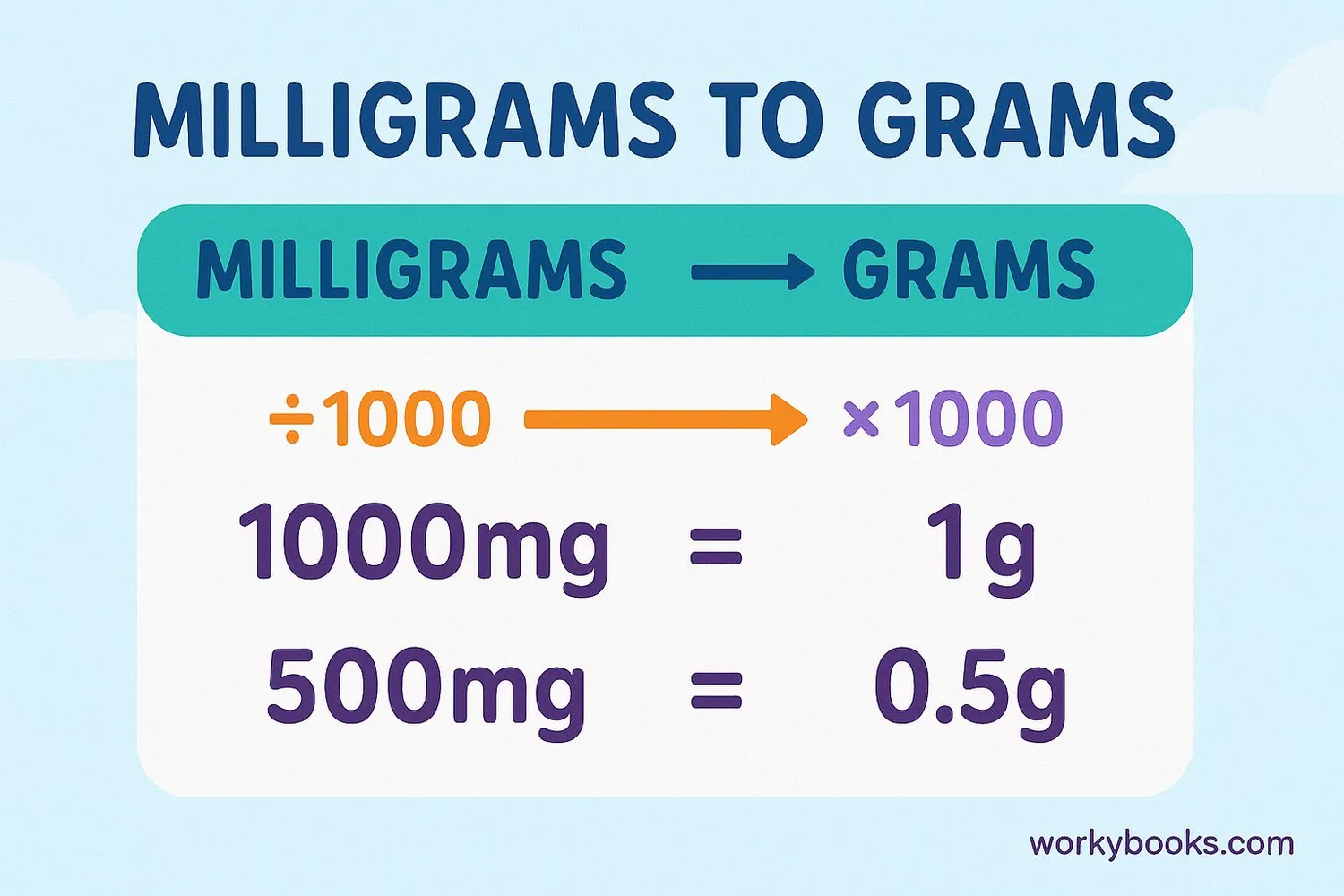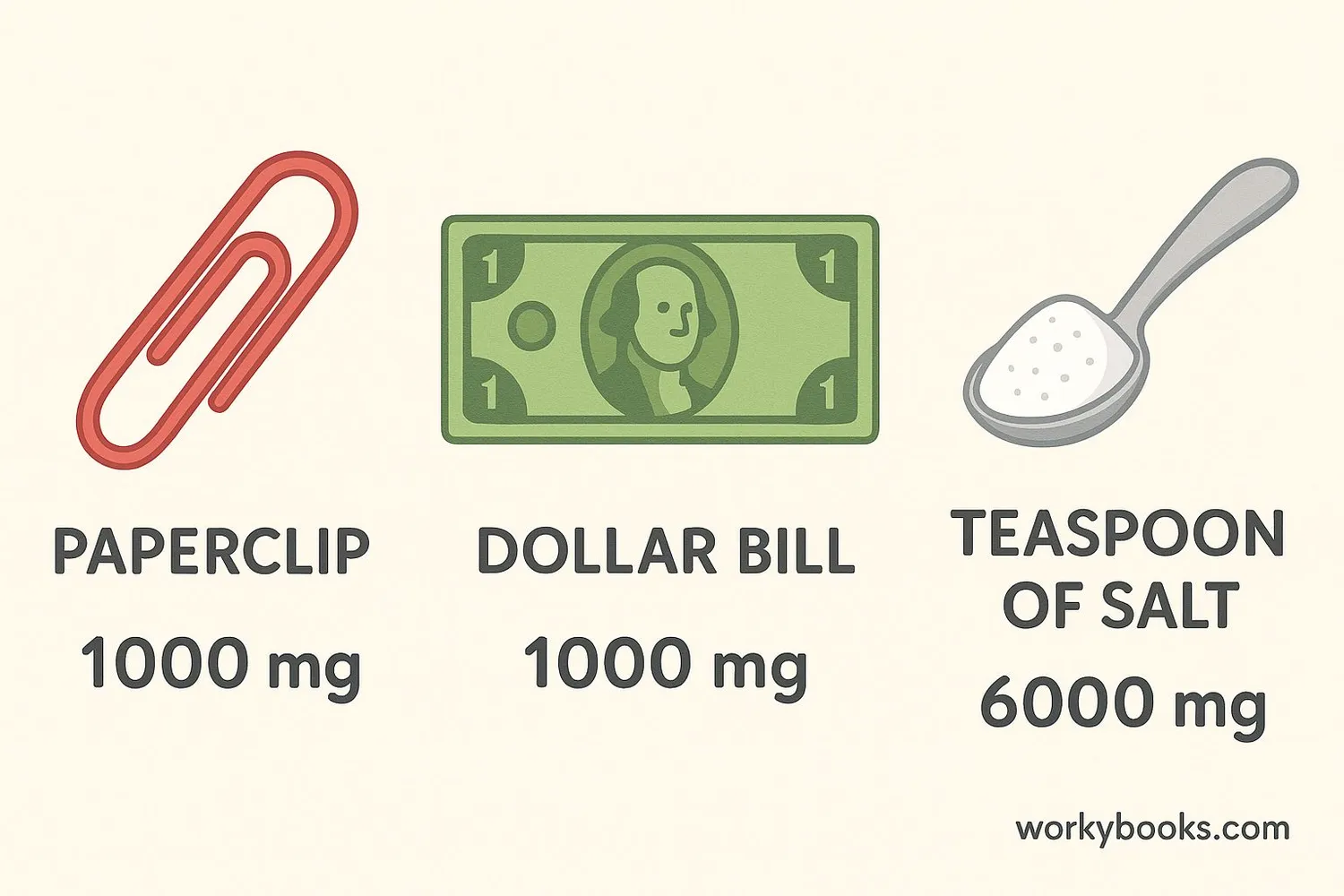Milligram (mg) - Definition, Examples, Quiz, FAQ, Trivia
Learn about the milligram unit of mass with easy explanations and practice activities
What is a Milligram?

A milligram (abbreviated as mg) is a very small unit of mass in the metric system. It is equal to one-thousandth of a gram. To help you understand how small a milligram is, think about these examples:
• A single grain of table salt weighs about 1 milligram
• A small snowflake might weigh just a few milligrams
• A typical raindrop weighs about 20-30 milligrams
Milligrams are used to measure very light objects, especially in science, medicine, and nutrition. When you see nutrition labels on food packages, vitamins and minerals are often measured in milligrams.
Key Concept
1 milligram = 1/1000 of a gram. This means it takes 1000 milligrams to make 1 gram.
Milligrams in the Metric System

The metric system is a decimal-based system of measurement used around the world. It's based on powers of ten, which makes conversions between units easy. Here's how milligrams fit into the metric system for measuring mass:
Metric Mass Units
• Kilo- (thousand) - 1 kilogram = 1000 grams
• Centi- (hundredth) - 1 meter = 100 centimeters
• Milli- (thousandth) - 1 gram = 1000 milligrams
Understanding these prefixes helps you convert between different metric units.
Remember
The metric system is used by most countries around the world and is the standard system for scientific measurements.
Converting Milligrams

Converting between milligrams and other metric units is simple because the metric system is based on powers of ten. Here are the key conversion formulas:
Conversion Formulas
Example 1: Convert 2500 milligrams to grams
Solution: 2500 ÷ 1000 = 2.5 grams
Example 2: Convert 0.75 grams to milligrams
Solution: 0.75 × 1000 = 750 milligrams
Example 3: A vitamin C tablet contains 500 mg of vitamin C. How many grams is this?
Solution: 500 ÷ 1000 = 0.5 grams
Milligram Conversion Chart
| Milligrams (mg) | Grams (g) |
|---|---|
| 100 mg | 0.1 g |
| 250 mg | 0.25 g |
| 500 mg | 0.5 g |
| 750 mg | 0.75 g |
| 1000 mg | 1.0 g |
| 1500 mg | 1.5 g |
| 2000 mg | 2.0 g |
Conversion Tip
When converting milligrams to grams, move the decimal point three places to the left. When converting grams to milligrams, move it three places to the right.
Real-World Examples

Milligrams are used to measure many things in our daily lives. Here are some common examples:
Medicines: Many pills and tablets are measured in milligrams. For example, a typical aspirin tablet contains 325 mg of medicine.
Nutrition: Vitamins and minerals on nutrition labels are often measured in milligrams. For instance, an orange contains about 70 mg of vitamin C.
Small objects: Very light objects are often measured in milligrams:
• A small paperclip weighs about 1000 mg (1 gram)
• A dollar bill weighs about 1000 mg (1 gram)
• A teaspoon of salt weighs about 6000 mg (6 grams)
Science experiments: In chemistry, small amounts of substances are often measured in milligrams.
Understanding milligrams helps us measure and understand these small but important amounts.
Real-World Connection
Doctors use milligrams to prescribe the right amount of medicine for patients based on their weight.
Measurement Practice Quiz
Test your understanding of milligrams with this 5-question quiz. Choose the correct answer for each question.
Frequently Asked Questions
Here are answers to common questions about milligrams:
Measurement Trivia
Discover interesting facts about measurement and milligrams:
Origin of the Metric System
The metric system was created in France during the French Revolution in the 1790s. It was designed to have a logical, decimal-based system that was easy to use and understand, unlike the various measurement systems used before.
Tiny Measurements
Scientists sometimes need to measure incredibly small amounts. For example, some medications are measured in nanograms (one billionth of a gram), which is one million times smaller than a milligram!
Medicine Measurements
Doctors must be very careful with milligram measurements. Giving just a few milligrams too much or too little of certain medicines can make a big difference in how well they work or whether they cause side effects.
Smallest Scale
The world's most sensitive scales can measure changes in mass as small as 0.000000000000000001 grams (that's 0.000000000001 milligrams!). These scales are used in scientific research to study extremely tiny particles.





